With that being said, I want to offer as much help as I can to anyone out there thinking about or just about ready to take the NASM exam. It's tough, but it's so rewarding to be able to walk out of that testing center with a "Congratulations, You Passed" letter in your hands and a ginormous smile on your face.
I had wished there was a comprehensive post like this out there, but only came across bits and pieces through extensive searching. So, I decided to write exactly that for you:
Study Plan
1. Read through the textbook at least twice. The first time, I took diligent notes like I learned and always did in school. I take down important notes in a notebook with highlighted, clearly-designated headlines and subheadlines. I write and underline all terms from the book in the notebook. For one, the act of writing helps cement ideas in the brain. For another, putting things into your own words--just the act of thinking about how you want to explain it to yourself--helps you understand the concepts so much more clearly. For even another, it's much easier to study out of a succinct, organized notebook than the entire textbook.
2. Go back and read the book again. This time, take extra time to study the things you're struggling with. I also made my flashcards during my second reading of the book. By now, I had written and rewritten so many terms that they were becoming quite familiar by repetition. Also, follow along with your study guide and make sure you understand the concepts outlined in there and have them written in your notebook or flashcards.
3. Use every online resource offered to you. The textbook comes with login information for thePoint software. Test yourself with the questions there after each chapter. Your NASM login will take you to a whole different set of helpful information and video modules. Play all the videos, try all the self-tests. Go back later and playback the ones you're struggling with. The quizzes on the NASM website and thePoint website are quite unlike what you'll find on the actual test, but do them anyway. I think they're actually harder since they're application-style questions, which will only help you in the long run.
4. Now, actually use those flashcards and notes. I had a stack of flashcards that consisted of at least two packages of index cards. Every time we went visiting family or sat in a car, I had my notebook and flashcards with me. I didn't have to lug the whole textbook with me because my notebook offered a much more condensed, digestible source of all the critical information. Instead of playing Farmville, use your work breaks to shuffle through your flash cards. Make sure they're not in any specific order so you don't memorize things based on their location in the book.
5. Start right away! There is no way you will be able to complete all of the above things in your last month or week. You have 180 days from when you register until test day. Crack that spine the day you receive the textbook. I used my entire 6 months to prepare, and I suggest you do so as well. Pace yourself. However, you don't want to forget everything you read in month 1 by month 6, so make sure you're continually reviewing older content as you go. That's why flashcards and notes are so great!
6. If you can, attend a workshop: I think I intended to take the exam prep workshop, but signed up for the training workshop instead. No worries! The workshop I attended really helped me to understand how to put what I learned into real-life context. And the instructor used only terminology and concepts true to NASM text, so you're never left trying to sort out and apply what they're teaching to what you're learning about in the book--it all coalesces. We also talked so much about reps, sets, progressions/regressions, tempos and that sort of thing that I was easily able to remember it for the test. I don't think you necessarily need a workshop to pass the exam, but it's a cool way to meet other new trainers and increase your understanding. Plus, if you've never trained a soul before, you get hands-on practice to make you less unsure of yourself.
7. Get excited! I love the world of health and fitness, so it was easy for me to be excited about becoming a certified personal trainer. That also made me into quite the information sponge. I love this stuff! I love learning about every aspect of it. And that excitement and passion were the reasons why I could digest all of that information. I simply wanted to!
Have a little fun and draw hearts when studying the heart.
What to Study
Off the top of my head, I'm going to spout off what I remember to be pertinent for the exam (i.e. this is NOT an exhaustive list and this is only based on the version of the exam that I was given):
- You are really going to need to understand flexion/extension, concentric/eccentric phases, planes of motion, etc. If you understand these and can clearly picture what's happening during various exercises, a lot of things will be much clearer. You will have application questions related to these that you'll be able to answer if you have a solid understanding of what's going on with these.
- Related to that, you'll need to memorize the eccentric/concentric and agonist/synergist/stabilizer/antagonist contractions during the specific examples given: squats and overhead presses.
- You will have one question from the Code of Professional Conduct. How many years should you keep files (four)? How many CEUs do you need within how many years to recertify? That sort of thing.
- You will need to know how to progress and regress the various exercises in the book. For example, you need to know how to progress and regress with stable/unstable surfaces and two feet/one foot.
- You should definitely understand the parts of the heart and their functions, including but not limited to:
- Sinoatrial node is the "pacemaker of the heart."
- Understand the functions of the left/right aorta/ventricles
- The exchange of oxygen and carbon dioxide between the lungs and heart
- The structure of skeletal muscle: you might even want to make a copy of the picture of this and tape it in your notebook. You'll need to know about all the various parts like the epimysium, endomysium, sarcolemma, and all the rest. You'll have to understand these, know their location, know their function, etc.
- Golgi tendon organ: understand function and how it works. Know the difference between autogenic inhibition and reciprocal inhibition and how it relates to stretching. This is a great article for understanding the difference. I had a hard time with this concept and this resource finally helped me make sense of it.
- Understand flexibility exercises and the stage of the OPT model they are associated with: static (phase I), active (phase II), dynamic (phase III).
- You'll have to know the various strength, core and SAQ exercises and which Phase of the OPT model they are appropriate for. Notice that many of the stabilization exercises are on a stability ball and many of the power exercises involve throwing a medicine ball. Recognize those patterns to help you remember those. Endurance exercise have more reps than strength. Hypertrophy has fewer reps. You shouldn't need to know rest periods, etc, just a good solid knowledge of reps, sets and tempos.
- Core: what are the parts of the local stabilization system and what are the global stabilization?
- Be pretty darn familiar with the processes of ATP-PC, glycolysis, and oxidative systems and at which point in exercise they kick in.
- Have a clear understanding about how the sarcomere works and the function of myosin/actin.
- Memorize how fast-twitch (Type II) and slow-twitch (Type I) muscle fibers work.
- Familiarize yourself with the general adaptation system: from alarm reaction to resistance to exhaustion.
- Resistance training systems (supersets, pyramids, etc): know the difference between them and when they're appropriate to use.
- Memorize the number of and types of essential, nonessential and semi-essential amino acids.
- Know the carb, protein and fat recommendations as well as their calories per gram.
- What are the water recommendations for various populations?
- Understand the stages of change: precontemplation, contemplation, preparation, action and maintenance.
- Know your acronyms, such as SMART goals: what's the difference between Attainable and Realistic?
- I think I had a CPR question on my test. Not sure if it was a research question or not, but you should have a pretty good idea what the answer is because it's pretty self-explanatory.
- Know how to identify and know what muscles are lengthened and tight in upper crossed, lower crossed and pronation distortion syndromes.
- You must know the stretches that should be performed for different compensations on the overhead squat assessment table. You will have lots of questions pertaining to these corrective-type exercise. In fact, you should pretty much know the overhead squat assessment table by heart.
- Know how to perform and understand what you're testing with the various assessments: Shark Skills, Davies, Rockport Walk Test YMCA step test, etc. Know how to perform them and what you're actually testing.
- What is the different objective vs. subjective information you'll be getting from clients?
This list is by no means comprehensive, these are just the things that are fresh in my mind and were covered on my specific exam. Make sure you don't hone in on only these specific things to the detriment of other important concepts.
Some amazing resources:
1. Yahoo Body Maps I didn't actually find this amazing tool until after my exam, but I'm pretty sure that this would've helped me immensely. I printed off muscle maps online (Anatomy Man), but this Yahoo one is interactive and 3-dimensional and explains muscles in laymen's terms. You almost feel like you could play doctor after looking at all the bones, tendons, nerves, muscles, etc.
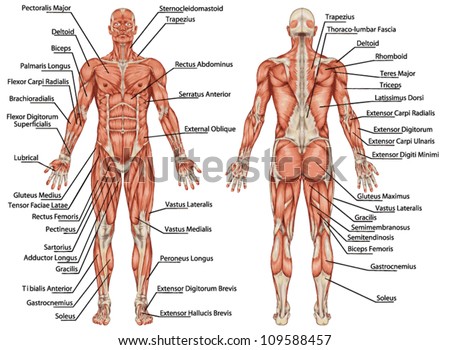
{Source}
2. NASM Trainer Exam App (by Upward Mobility): the NASM app is the same price but offers only a fraction of the questions that this one does. The Upward Mobility app is really great at making you aware if you understand certain concepts or not, since they kind of go in order by chapter. It's great to pull out when you're stuck by a train or waiting for your kids to get out of school. Not that I know anything about that!
3. This Bodybuilding forum: This forum is extremely helpful with what to study and what to pass over. Take this guy's advice and learn the muscles as "groups." For example, the muscular system appendix groups muscles by location in the body. The hamstring complex concentrically accelerates knee flexion and the various muscles of the quadriceps concentrically accelerate knee extension. Group your muscles and know which muscles are part of each group. It will save you so much time and overwhelm. Many of the questions mentioned in the forum also seemed to be on my test, so add them to your flashcards. (The only caveat is I think the page numbers mentioned in the forum are for a previous version of the textbook.)
4. Use some learning strategies from Holistic Learning: This is kind of abstract to explain, but I visualized and made up pictures in my head about certain concepts. For example, the right side of the heart receives blood low in oxygen and high in CO2 and pumps it to the lungs to be oxygenated. The left side pumps blood high in oxygen and low in CO2 to the rest of the body. So, I visualized two rooms in my heart, a right room and left room, with a bunch of smokers in the right "room" and healthy runners in the "left" room. The right room is filled with carbon dioxide (cigarettes), and the left side brings oxygen (from strong lungs) to the body. Get it? Visualization and metaphor-type learning is very powerful. I betcha you won't forget the smoking/non-smoking one.
5. Kim at Fittin Pretty has generously offered a FREE download of her entire document of notes. It's over 100 pages, but it looks similar to my own handwritten notes in my basic college-ruled notebook. I still think (and it's proven that) there's great value in taking your own handwritten notes, but Kim has done all the work for you.
One more piece of advice: the night before the test, give your mind a break. Don't study into the night. Just allow all the information that you know just synergize in your brain as you sleep. Get your 8 hours of sleep and do the test in the morning, or whenever your brain is the sharpest. Set out your ID and CPR card the night before so you don't worry about or forget them. Then, decide on what you'll reward yourself with when you successfully pass the exam. It really is worth celebrating--you deserve it! I'll share what I rewarded myself with in a post soon, because they're paying themselves off in dividends (business cards, a domain name and an Arc notebook).
I wish you all the best of luck with your exam! If you are on the fence about becoming a personal trainer, I say go for it, if you have the resources to do so. NASM is always running sales, so don't ever pay the full price. Sign up for their emails and you'll soon get incentives in your inbox. Although I haven't taken on any "official" clients yet, I have absolutely no regrets for diving right in and getting certified. I could've gotten bogged down in the details about the PT job market in my area and wondering about liability insurance and on and on. But the best thing you can do is just go for it and worry about those details later.
Let me know if you have any other specific questions, and I'll see if I can answer them. If these tips helped you pass your exam, I'd be more than honored to hear about it! Leave a comment to let me know how it goes.

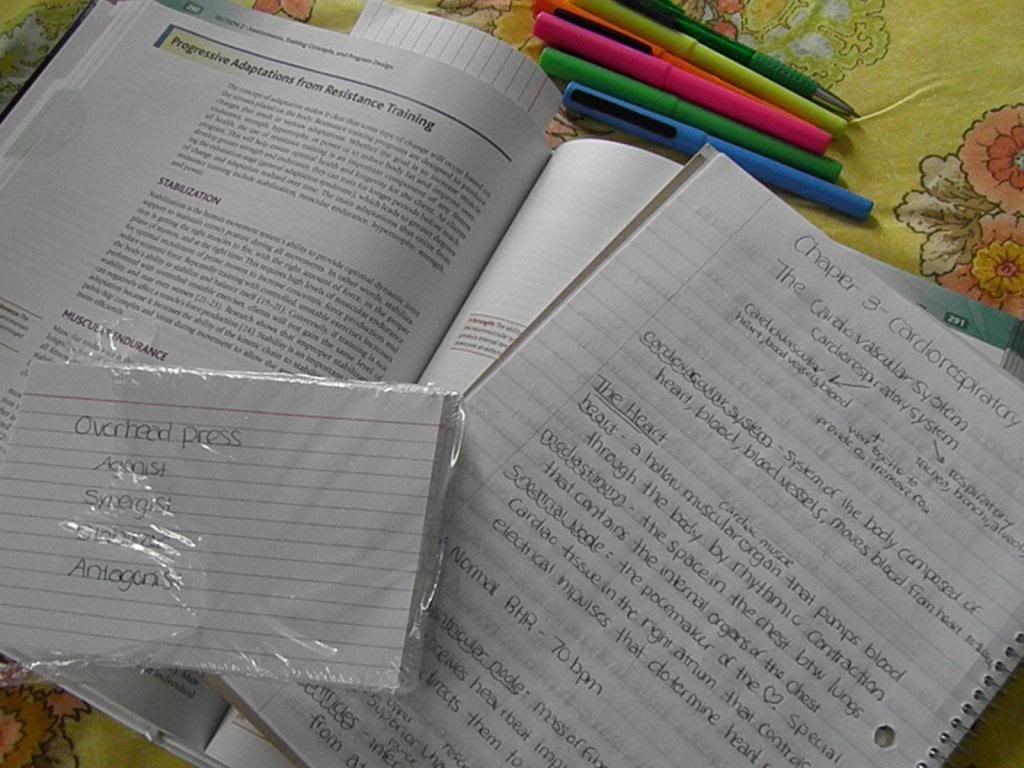
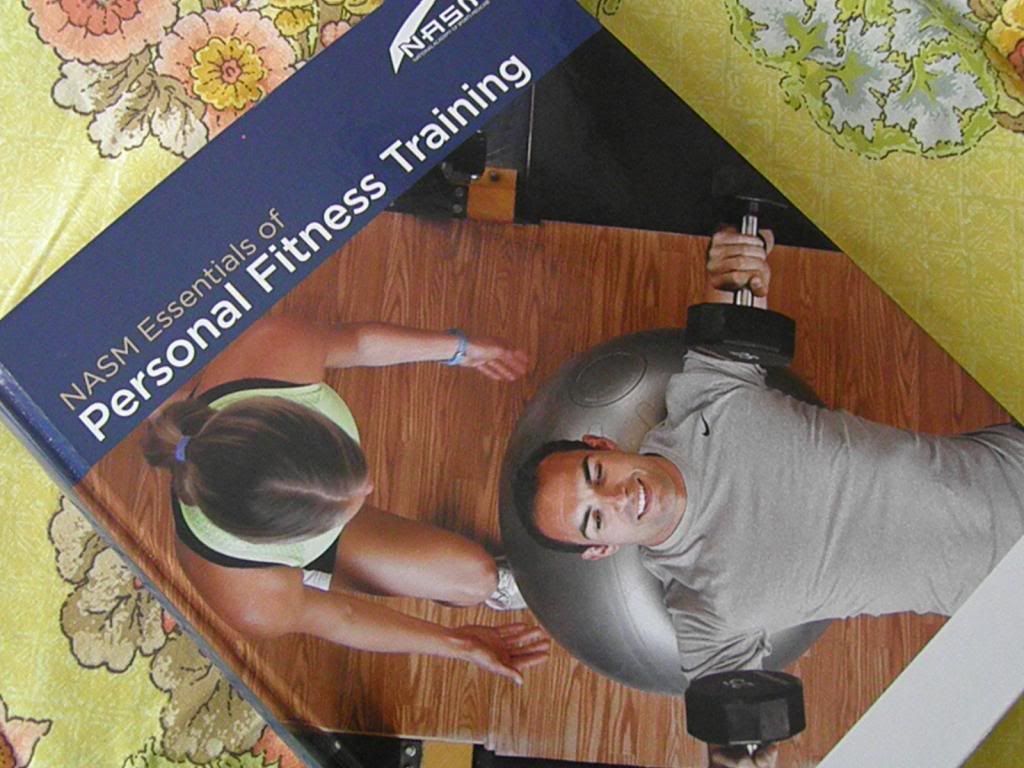
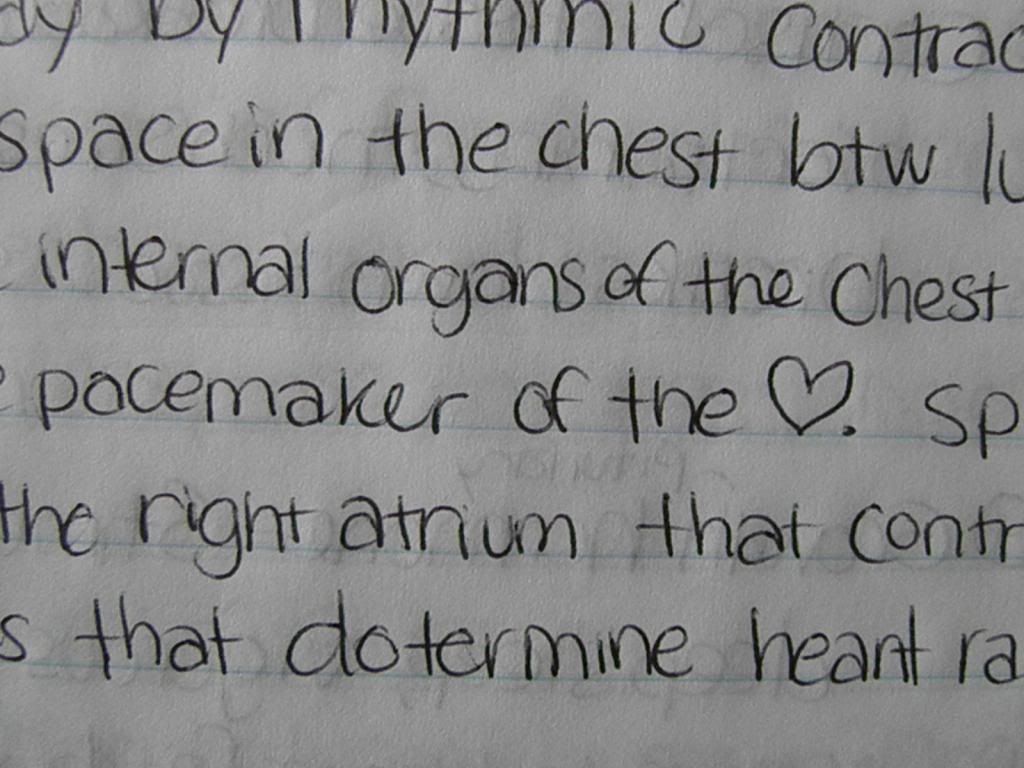
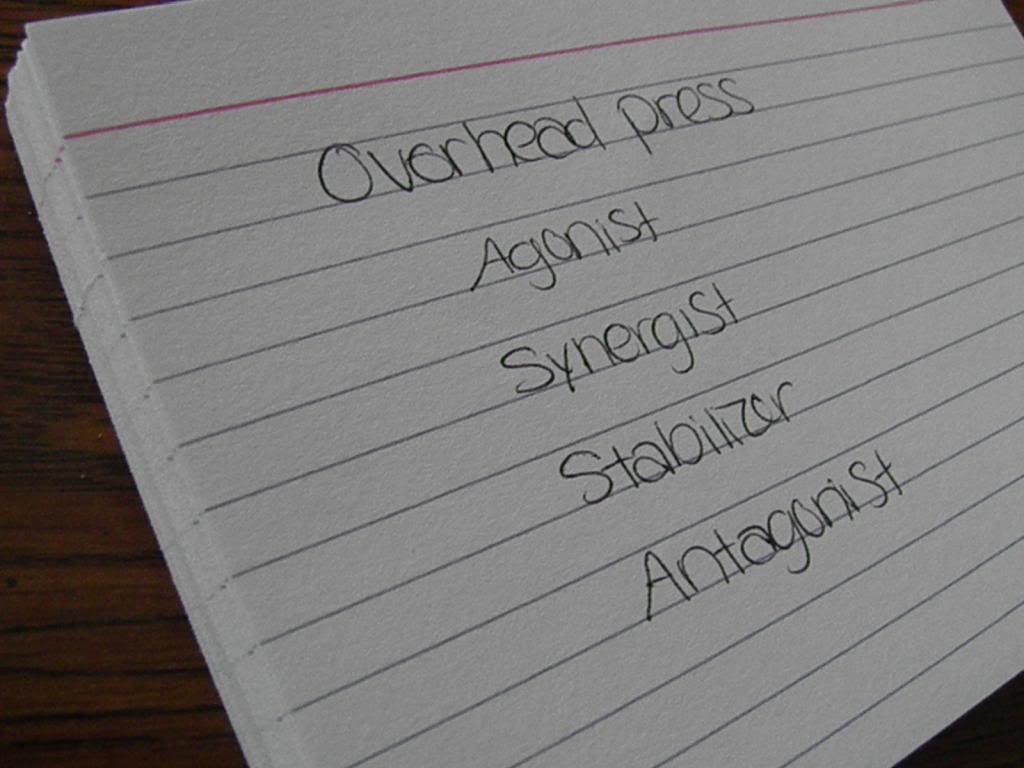
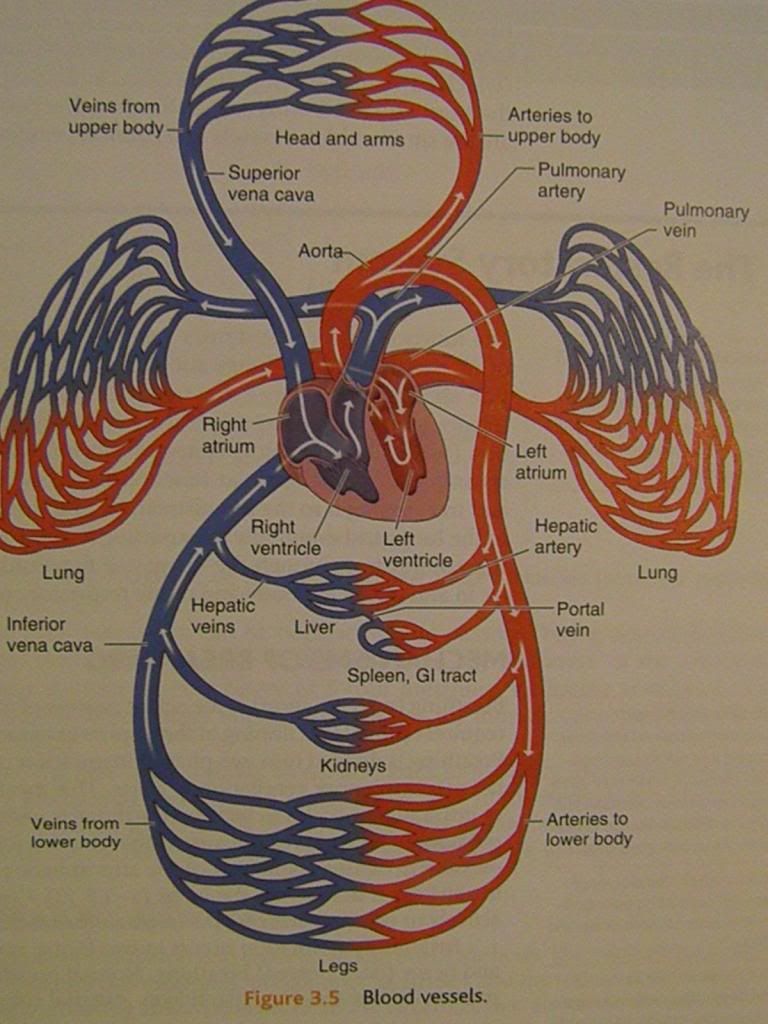
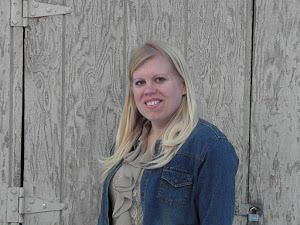




No Comments Yet, Leave Yours!
I am studying to take my exam in a few months but as I am going over the bones section, I am really wondering how in detail they get about bones on the exam? Any help would be greatly appreciated thank you!!
I don't remember having to know much about bones. You will have to know types of bones, like hinge, radial, etc.
Hi Jessica,
Thank you for taking the time to document your NASM experience, especially the helpful outside resources. It is very obvious you enjoy helping people!
Superb blog! Loved it! I have just begun with my NASM exam and was wondering how I should be getting on with studies. I have a wife and kid and alongside work, there is not much time left for studies every day. How much time should I study for daily? Also my notes are getting pretty lengthy. After a week into enrollment, I find myself writing down most stuff from Chapter 2 Basic Exercise Science. How exactly should I be taking down notes then? Pleae help.
I too was studying while taking care of my son and working full-time, so it's possible!!! I did a lot on the weekends and probably 1-2 hours per night (not every night). I would study on a bench when I took my son to the park, on lunch breaks and in the car when my husband was driving. Just fit it in where you can and start early! Don't wait until one month before your test date. As for notes, I usually just summarized everything. I always wrote down key terms and then tried to re-word and summarize information so it didn't get too lengthy. I also only included things that were key points that I needed to remember. Everything was broken down by heading, subheading, etc like we learned in school. Don't worry though, the more notes you take, the more info you'll probably absorb. Hope this helps. Let me know if you have any other questions.
I don't know if you've already finished your NASM Certification or not, but I believe that there is strength in numbers! I'd like to invite you to my closed Facebook group, "NASM CPT Study Group". It's a forum of others seeking certification to use for study tips and support.
You can get even more great tips for passing your exam well at this blog
Post a Comment